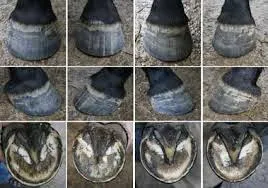 |
| An Insight In Navicular Syndrome In Horses |
Taking care of your animals in terms of health is an ideal step in order to enhance its lifespan as well as serve its purpose fully. The <A href="http://www.
The signs that the horse shows to suggest that it has been affected by this disease is lameness. It may appear suddenly but in most cases it start as mild and progresses to a worse one with time. The pain at the heels can be noted by the attempts of the horse keeping pressure off the area. Difficulty in turning sharply, moving on hard or rocky ground and going downhill is experienced by the affected pony. The animal tends to become uncooperative in times of farrier visits.
The root of the condition is unknown though many misconceptions point out to mixture of factors. The most likely to be affected mounts are those with upright pasterns, bodies that are heavy and with small hooves. Majority of victims include those which have an account of increased concussions and involve impact on frontal legs. A more common incline suggests a mixture of high stress and limitation in oxygenation in heels. However, the exact root of soreness and tissue damage are still unknown.
The type of mounts that get affected or lucky is not guaranteed although the malady seems to be more inclined to stock type horses. Fairly upper incidences are more commonly identified in breeds that are warm blood and thoroughbreds while the Arabian types get hardly ever affected. Diagnosis of lameness caused by the syndrome is mostly done between the ages seven to age fourteen.
The diagnosis is based mostly on radiographic and clinical signs. Supposing there appear changes in the x rays, it should not be ruled out that the pony is suffering from the disease until the results are matching with the clinical signs. More lollipop like figures shows of how worse the prognosis of the ailment is.
The first steps to combat this condition include consulting with a farrier and a vet. Though no cure is available, a hasty diagnosis will allow medical, treatment farrier or surgery to kick start early during the course of the disease. Therapeutic shoeing and proper trimming can offer relief from pain to most horses. Medications that are anti-inflammatory are injected on the heel area or administered orally to relieve pain.
Feeding practices does not in any way cause the syndrome. The legs being the affected parts by the condition, a mount that is very heavy will exert a lot of pressure on its musculoskeletal frame structure. Given the relationship between this syndrome and heavy bodied, small footed mounts, it translates to a wise decision of avoiding your pony to become too fat.
The condition is not terminal and proper care will restore the health back. One should seek medical attention as soon as possible whenever the symptoms start showing. Necessary precautions such as avoiding overloading your pony in rough terrains, ensuring you fit it with horse shoes and keeping it physically fit in relation to its hooves will be a productive step.
Learn everything you've ever wanted to know about <a href="http://www.
------------------------------
You are receiving this because you signed up for it on 2014-05-05 from IP 105.156.196.59
To fine-tune your selection of which articles to receive, just login here:
using your username:
To unsubscribe please use the following link:
New Unique Article!
Title: An Insight In Navicular Syndrome In Horses
Author: Ina Hunt
Email: nathanwebster335@live.com
Keywords: medicine, health, treatment, healthy
Word Count: 555
Category: Medicine
------------------------------

Comments
Post a Comment